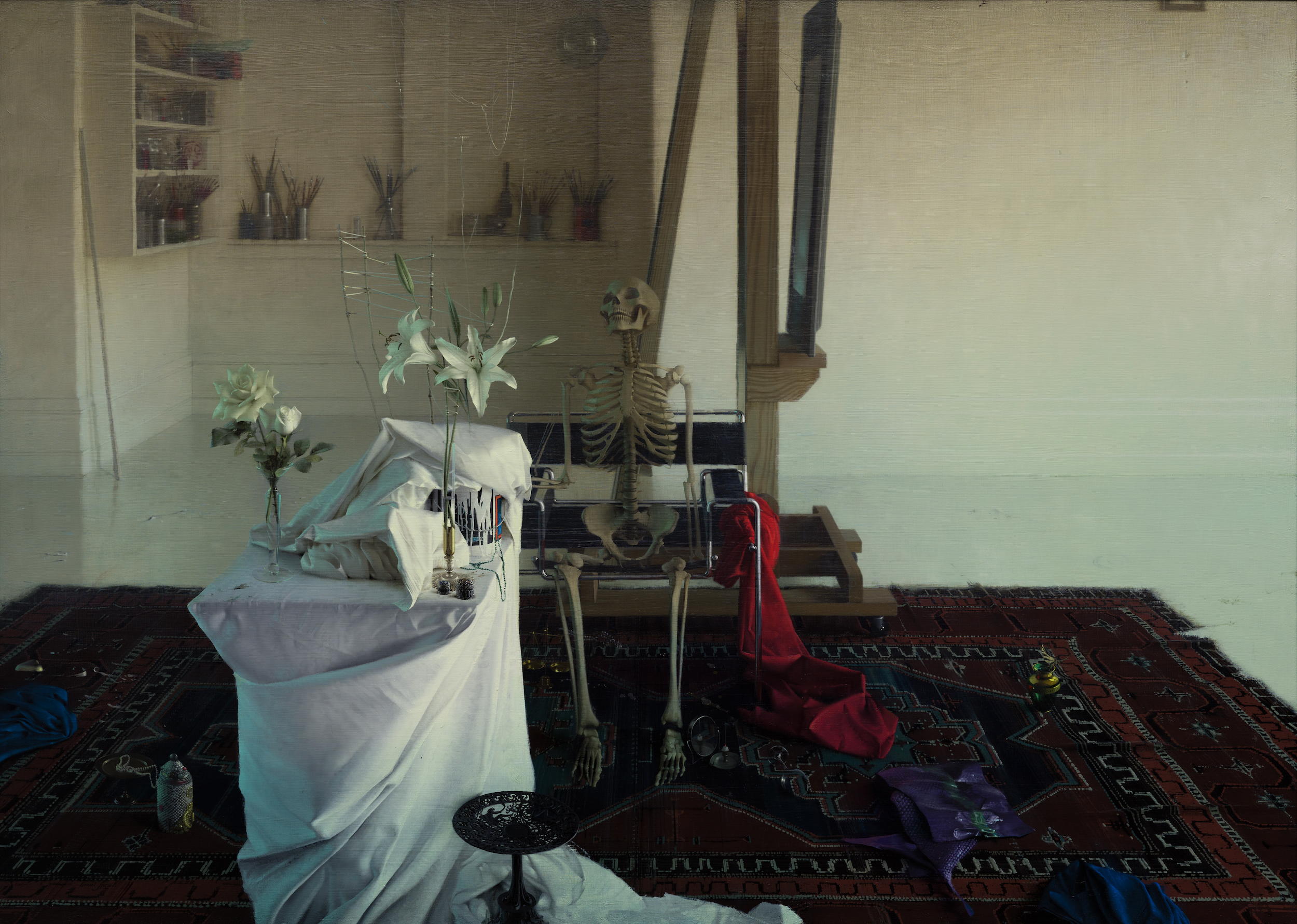Sleeping Flowers (Vanitas)
Sleeping Flowers (Vanitas) Audio
The title of this painting, “Sleeping Flowers” in parentheses “Vanitas”. Sleeping Flowers comes from a poem by William Wordsworth, which is a nineteenth-century English poet. But the main thrust of the painting is the Vanitas, and that’s a seventeenth-century Dutch tradition in which iconography was used to express didactic messages to the public or to remind people, as if anyone ever had forgotten, that they would one day die. I don’t think anyone’s ever been unaware of that. Some of the symbolism, the most obvious being the skeleton, the visible reminder of death. Amongst other, the other symbols the flowers actually have to do with transience of existence.
There’s a tiny little scale between the tibia and fibula of the skeleton and the white cloth. The scale is symbol of judgment and you know, the validity of your life and if you’re going up or down when the doors close. The candle and mirror are both symbols from traditional symbols in vanitas painting.
And I’d suggest you’d look up that word vanitas and see what was all about in the 17th century and it has a continuing popularity in our time. The candle, a burnt out candle that’s all the way to the bottom, symbolizes a long life lived. A blown out candle that’s tall is a short life which is a tragedy, a long life that comes to an end.
It’s not a tragedy as much as we may miss the deceased, it’s the natural order of things. The turned-over goblet is also from the seventeenth-century Dutch tradition, and it just, I’m not entirely sure why it shows up all the time, but it just has to do with the transient nature of our existences that, you know, it may be once full, but it’ll be empty or broken and gone at another moment.
The butterfly over towards the right lower part, it has to do with ephemeral nature of existence. Have various jewels, you know, strings of pearls and so forth around that. Shows up a lot in the Dutch, the goblet in front, it’s more for compositional reasons than anything, I thought that it would integrate the pattern of the rug on into the white cloth. There’s no real known symbolic purpose to it and the dripping paint on the paint can, part of the reason I did it was ’cause it was fun to do.
See if I could make it look like it was real paint dripping down there. But the other reason was that I’ve got all these verticals, you know, the vertical lines of the metal chair, the vertical lines of the leg bones, and then they tie right into the vertical lines of the paint and then the vertical lines of the flowers. That was the real reason I did it. It just had more to do with this repetition of verticals that’s going from left to right through the painting, the paint brushes in the distance.
Well, it was my studio and it’s a common practice in art to, you know, incorporate, say narrative and dramatic elements with quotidian elements. Just the materials of daily use and that’s my daily life is paint brushes and paint tubes. The sphere on top is something that I’ve been attached to. It’s a glass globe. You see it in Vermeer’s painting called the “Allegory of Faith,” and that’s where I really latched onto it. And that symbolism of all the world contained in a glass sphere, entire universe contained in, you know, one small area.
